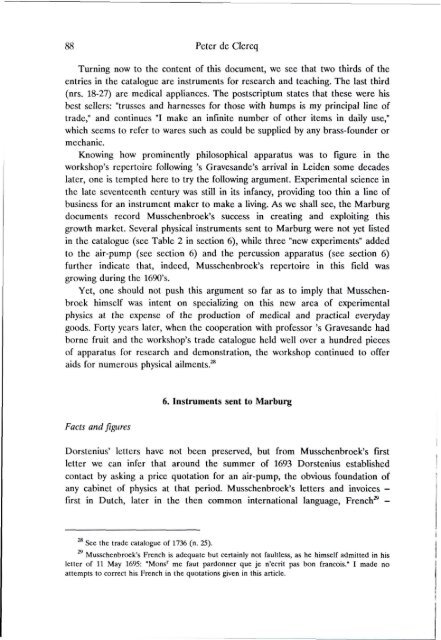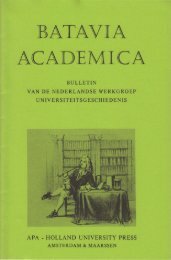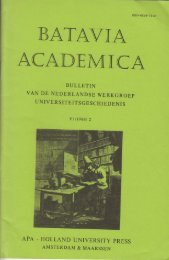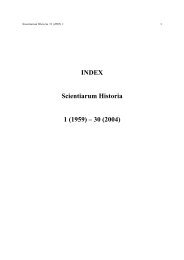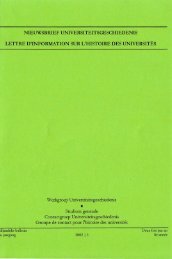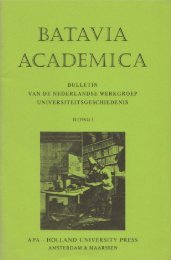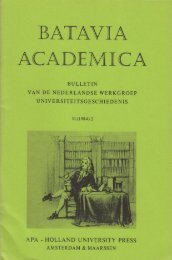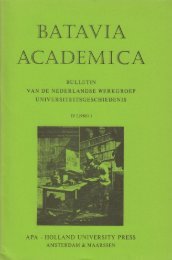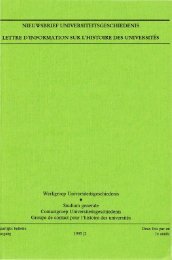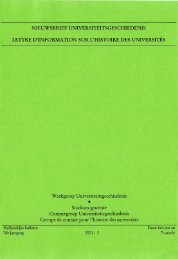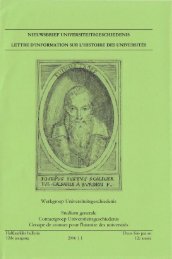EXPORTING SCIENTIFIC INSTRUMENTS AROUND 1700 - Gewina
EXPORTING SCIENTIFIC INSTRUMENTS AROUND 1700 - Gewina
EXPORTING SCIENTIFIC INSTRUMENTS AROUND 1700 - Gewina
Create successful ePaper yourself
Turn your PDF publications into a flip-book with our unique Google optimized e-Paper software.
88 Peter de Clercq<br />
Turning now to the content of this document, we see that two thirds of the<br />
entries in the catalogue are instruments for research and teaching. The last third<br />
(nrs. 18-27) are medical appliances. The postscriptum states that these were his<br />
best sellers: "trusses and harnesses for those with humps is my principal line of<br />
trade," and continues "I make an infinite number of other items in daily use,"<br />
which seems to refer to wares such as could be supplied by any brass-founder or<br />
mechanic.<br />
Knowing how prominently philosophical apparatus was to figure in the<br />
workshop's repertoire following 's Gravesande's arrival in Leiden some decades<br />
later, one is tempted here to try the following argument. Experimental science in<br />
the late seventeenth century was still in its infancy, providing too thin a line of<br />
business for an instrument maker to make a living. As we shall see, the Marburg<br />
documents record Musschenbroek's success in creating and exploiting this<br />
growth market. Several physical instruments sent to Marburg were not yet listed<br />
in the catalogue (see Table 2 in section 6), while three "new experiments" added<br />
to the air-pump (see section 6) and the percussion apparatus (see section 6)<br />
further indicate that, indeed, Musschenbroek's repertoire in this field was<br />
growing during the 1690's.<br />
Yet, one should not push this argument so far as to imply that Musschenbroek<br />
himself was intent on specializing on this new area of experimental<br />
physics at the expense of the production of medical and practical everyday<br />
goods. Forty years later, when the cooperation with professor 's Gravesande had<br />
borne fruit and the workshop's trade catalogue held well over a hundred pieces<br />
of apparatus for research and demonstration, the workshop continued to offer<br />
aids for numerous physical ailments.^<br />
6. Instruments sent to Marburg<br />
Facts and figures<br />
Dorstenius' letters have not been preserved, but from Musschenbroek's first<br />
letter we can infer that around the summer of 1693 Dorstenius established<br />
contact by asking a price quotation for an air-pump, the obvious foundation of<br />
any cabinet of physics at that period. Musschenbroek's letters and invoices -<br />
first in Dutch, later in the then common international language, French^ -<br />
See the trade catalogue of 1736 (n. 25).<br />
Musschenbroek's French is adequate but certainly not faultless, as he himself admitted in his<br />
letter of 11 May 1695: "Mons"' me faut pardonner que je n'ecrit pas bon francois." I made no<br />
attempts to correct his French in the quotations given in this article.


